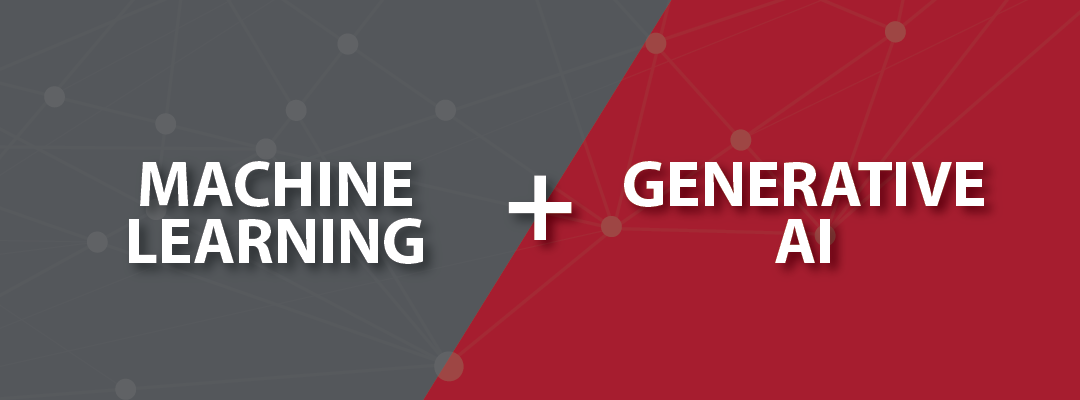Phil Benson is Blackline Safety’s Vice President of Product, overseeing product management, industrial design, UX design, data engineering, business intelligence, and AI/ML services. With a background in designing industry-leading safety products at BW Technologies by Honeywell and interactive learning solutions at SMART Technologies, Phil brings deep expertise in developing user-centric, high-impact solutions. At Blackline, he leads the development of a cohesive product portfolio, ensuring that every solution enhances customer confidence, usability, and brand loyalty. His team is committed to pushing the boundaries of connected safety technology, delivering innovative and data-driven solutions that protect workers in the most challenging environments.
Unlocking AI for EHS
Phil Benson, Vice President, Product
May 21, 2025
 Choose the right tool, boost compliance and transform workplace safety
Choose the right tool, boost compliance and transform workplace safety
Feeling pressured to incorporate artificial intelligence (AI) into your environment, health and safety (EHS) program? Unsure how to use it effectively or overwhelmed by the sheer number of AI tools available?
You’re not alone. A 2025 McKinsey report found while 92% of companies plan to increase AI investments, only 1% feel confident in their AI deployment. The most common barriers to adoption include beliefs AI is difficult to install and use, invades employee privacy and replaces human oversight.
This article will guide you on how to get started with AI in your safety program—covering everything from understanding different AI types to practical applications to key adoption considerations. AI can help you save time, unlock new insights, improve performance and reduce risks. With over a decade of experience managing safety data, Blackline Safety can provide practical guidance on how to reap the benefits of AI more effectively.

Did you know?
Blackline Safety has a dedicated data team ensuring our over 270 billion+ data points collected from device usage by our 2,200+ customers are well-protected and managed.
What We Talk About When We Talk About AI
In broad terms, there are two types of AI that have immense potential for health and safety:
1. Machine learning (ML) enables computers to learn from data and make decisions or predictions without being explicitly programmed. In other words, instead of following pre-written rules, machine learning algorithms are trained in an iterative process to find patterns in data and use those patterns to make future predictions or decisions.
Practical applications:
- Analyze vast amounts of data (such as sensor data, environmental factors, and worker actions) to uncover root causes of accidents or near misses.
- Track and log data associated with workplace injury and predict which activities are predictors of injury.
2. Generative AI (Gen AI) creates new content, such as text, images, or even videos, by learning patterns from existing data. It goes beyond simply analyzing or recognizing data, instead generating entirely new outputs that resemble the input data but are original. Examples of generative AI applications include chatbots, text-to-image generators, and AI-driven video creation tools.
Practical applications:
- Create compliance checklists or Standard Operating Procedures (SOPs) based on industry regulations, or conversely, compare SOPs to current or new regulations and identify any gaps.
- Analyze historical safety data to predict high-risk scenarios.
- Develop interactive training materials like quizzes and video scripts.
5 EHS Responsibilities Ready for the AI Revolution
AI can be a gamechanger within health and safety. Whether it’s automating tasks, predicting risks, improving compliance or boosting training, here are some detailed responsibilities that can be transformed with the right AI tools:
Typical EHS team pain points:
- Staying updated on new and evolving regulations and standards and implementing the necessary changes to ensure compliance.
- Preparing and submitting compliance reports to regulatory agencies.
How AI helps:
- Generate tailored summaries of complex legal and regulatory documents specific to your industry.
- Draft compliance checklists and SOPs.
- Answer questions about specific regulations in a conversational format.
Tool examples:
- ChatGPT, Microsoft Copilot, or Google Gemini can query regulations and create SOPs.
- Harvey is an AI tool designed to assist with complex tasks in legal, regulatory, and tax domains. It can be a valuable tool for professionals who need to navigate intricate legal and regulatory landscapes in specific jurisdictions.
Typical EHS team pain points:
- Conducting risk assessments and recommending controls to mitigate identified risks.
- Developing, implementing and monitoring safety management systems.
How AI helps:
- Analyze historical safety data to predict high-risk scenarios.
- Analyze IoT device (e.g. cloud-connected lone worker gas monitors) data and identify patterns from lone worker events, falls, gas exposures, or biometrics (heart rate, heat index).
- Find relationships by clustering and trending data from your safety management software.
Tool examples:
- DataRobot and H2O.ai are AI platforms that can automate insights and analyze historical safety data (such as incidents, near misses, and safety audits) to identify patterns and predict potential risks before they occur. This analysis can help organizations prevent accidents by proactively addressing hazards.
Typical EHS team pain points:
- Providing training on safety protocols, emergency procedures and proper equipment usage.
- Educating teams about hazardous materials handling and disposal.
How AI helps:
- Develop interactive training materials, quizzes and video scripts.
- Create customized learning modules tailored to specific roles or risks.
- Simulate accident scenarios in virtual environments using AI-generated content.
Tool examples:
- Pictory.ai can turn text-based training materials into engaging video content.
- Docebo can personalize content for users, recommend courses based on performance and preferences, and analyze learning data to improve training programs.
- NotebookLM can turn pasted text into a conversational style podcast for those with auditory learning preferences. Check out what it did with this blog below:
Unlocking AI for EHS Programs
14:04

Typical EHS team pain points:
- Creating and updating workplace safety, health, and environmental policies.
- Communicating policies across all levels of the organization and enforcing adherence.
How AI helps:
- Draft policies tailored to both organizational needs and legal requirements.
- Suggest best practices by analyzing industry trends and benchmarks.
- Review and refine existing policies using feedback and analytics.
Tool examples:
- Jasper can write comprehensive policy documents.
- Canva Docs can assist in drafting and designing policy templates.
Typical EHS team pain points:
- Collecting and analyzing data on workplace incidents, environmental impacts, and safety compliance.
- Leveraging data insights to improve EHS programs and demonstrate progress to stakeholders.
How AI helps:
- Automate the generation of reports from raw EHS data.
- Summarize key insights and trends from safety or compliance data.
- Generate visual reports (charts, graphs) for presentations and stakeholder meetings.
Tool examples:
- Amazon Q is a versatile GenAI assistant. Amazon Q for QuickSight can be used to create ad-hoc reports and dashboards powered by Gen AI. Use Amazon Q for Business can be used across your organization to answer questions and summarize information.
- Tableau GPT can automatically generate insights from your dataset, analyzing data and providing summaries, trends, and key findings that might be overlooked in manual analysis.
READ PART TWO: 3 Key Considerations for EHS Leaders When Adopting AI Tools
INTERESTED IN LEARNING MORE?
Join Our June 26th Webinar: Unlocking AI for EHS
Featured Content
|
|
Cloud-Connected vs On-Premises Solutions Explore 7 reasons why cloud connectivity is a smarter, future-proof choice that outperforms traditional on-premises solutions. |
|
 |
Change Management: Connected Safety Technology AdoptionA practical guide to change management for implementing technology into a safety program. Communicating clearly, training appropriately and planning effectively are essential elements of any new tech adoption. With connected safety, these items are especially essential for success.
|
Stay Informed
Receive articles about trends and best practices in the safety industry right in your inbox.
Related Blog Posts
Real-Life Incident: Mason’s Story — High H2S Exposure
November 25, 2025
“Shortness of breath. Request EMS to the location.” How Real-Time Gas Detection Led to a Quick Save Exposure to toxic gases can go from a strange...
Real-Life Incident: Gerry’s Story: Alone in the Boiler Room With CO
October 21, 2025
When a routine patrol became a potential gas poisoning tragedy, quick action and life-saving technology made all the difference. It was a routine...
Real-Life Incident: Brian’s Story - Containing a Texas Brush Fire
August 26, 2025
How quick action stopped a blaze from spreading, safeguarding nearby neighborhoods In a farming community in rural Texas with a population fewer...








.png?width=176&height=135&name=image%20(8).png)